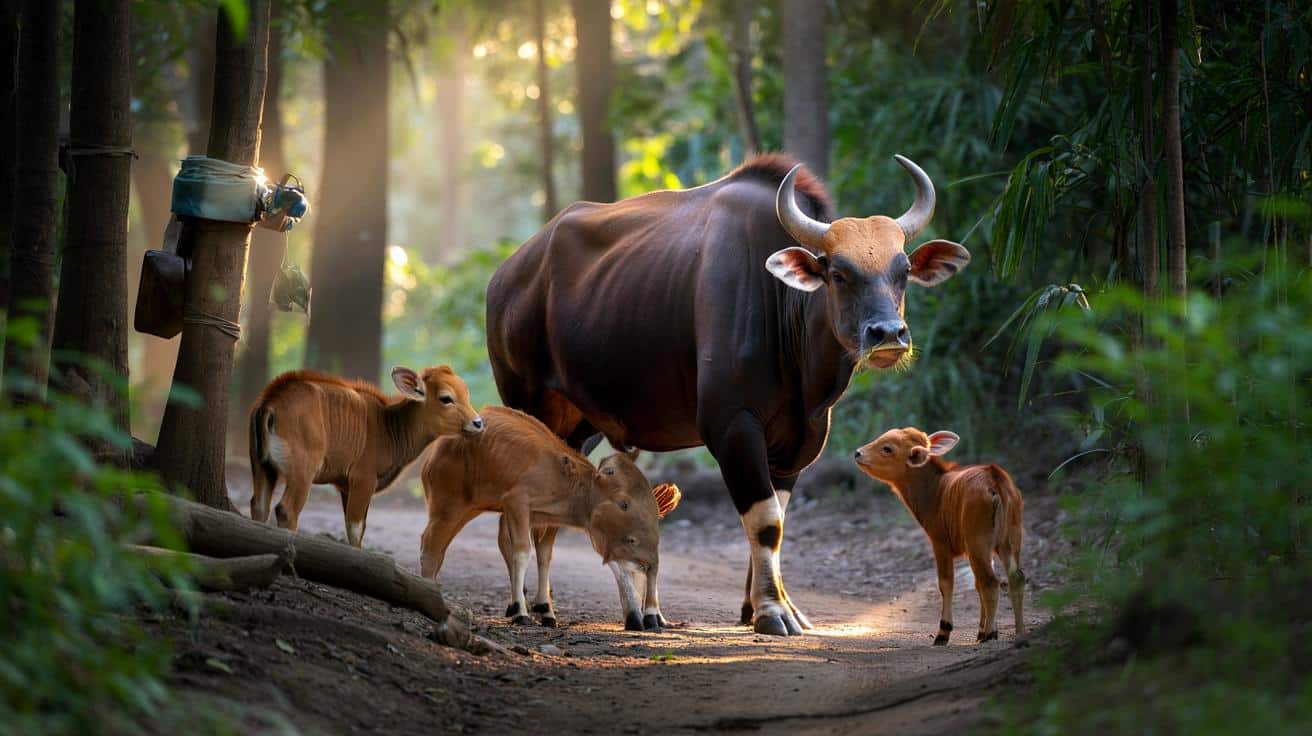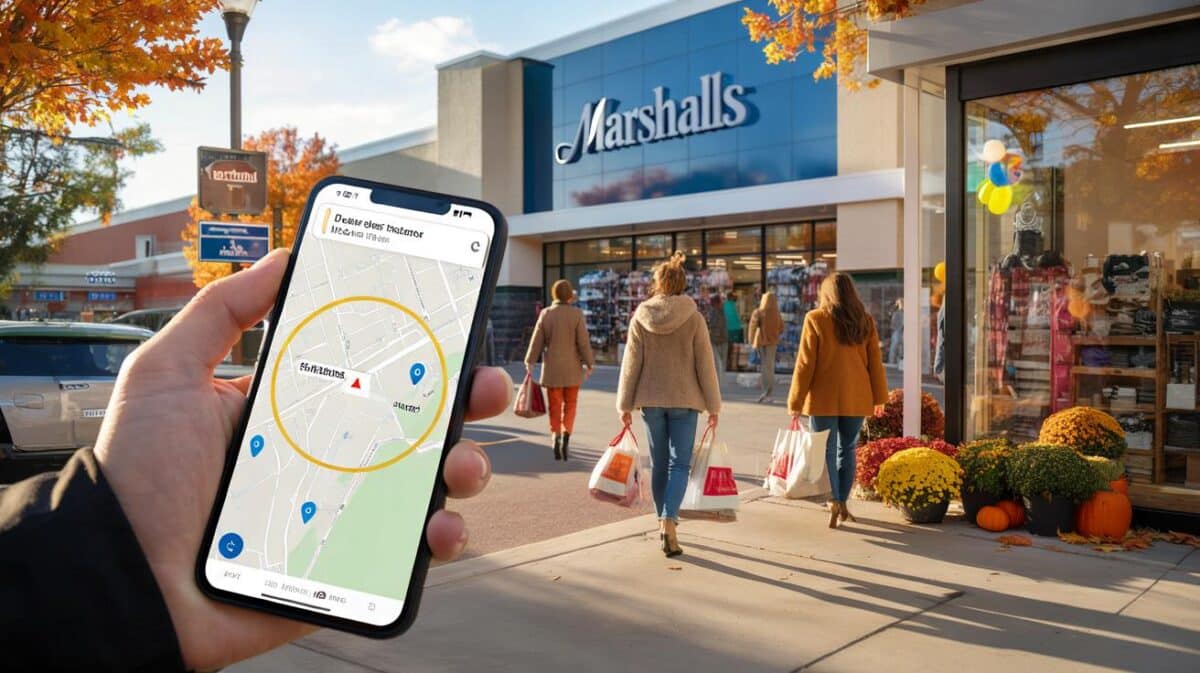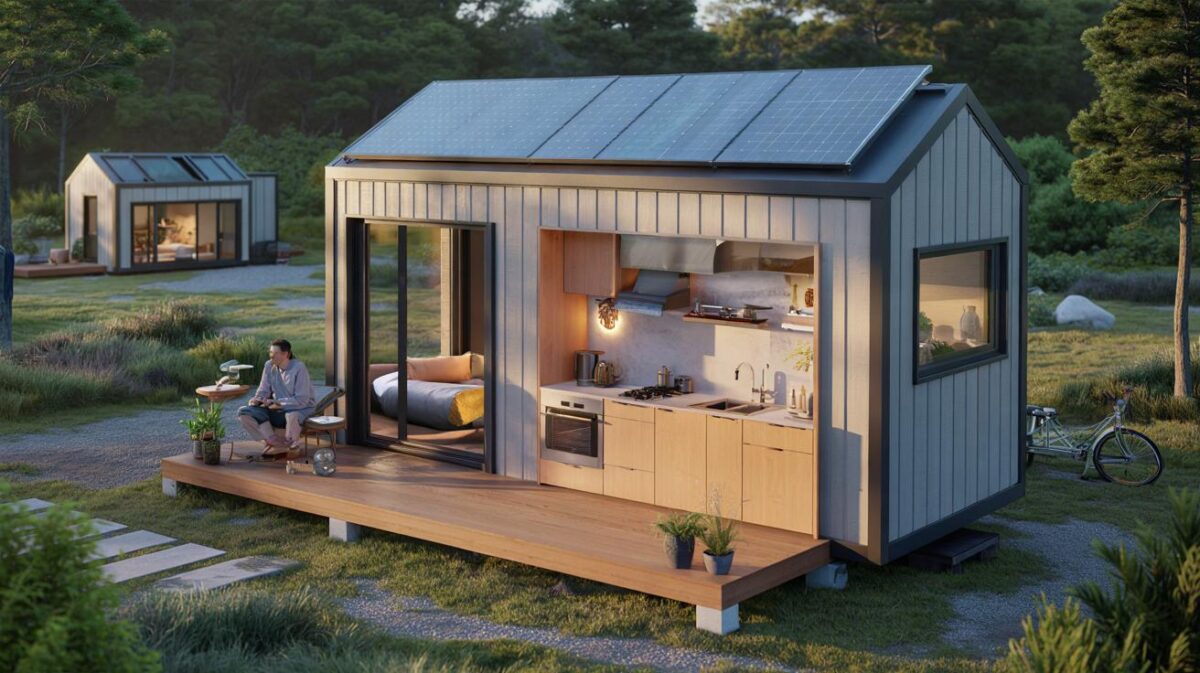A remote trail camera inside Huai Kha Khaeng Wildlife Sanctuary recorded a female gaur calmly shepherding three calves along a narrow forest path. The sight, brief and quiet, has delighted field biologists and park rangers who have spent decades protecting one of Southeast Asia’s last great strongholds of wildlife.
A quiet scene with loud implications
The gaur, the world’s largest wild bovine, once ranged widely across South and Southeast Asia. Hunting and habitat loss pushed the species into pockets. In Thailand, sustained protection has held the line. The new footage provides concrete evidence of breeding success, survival of multiple young, and the presence of safe corridors where a wary mother feels confident enough to travel in daylight.
Huai Kha Khaeng, a UNESCO World Heritage site covering around 1.4 million acres, sits within Thailand’s Western Forest Complex, a mosaic of reserves that support elephants, tigers, clouded leopards, hornbills and myriad smaller species. That scale matters. Large herbivores need space to roam, to feed, and to avoid conflict. The camera’s brief clip compresses years of work on anti-poaching patrols, habitat management and community partnership into a single, digestible moment.
One mother, three calves and 1.4 million acres: a compact snapshot of recovery that took decades to build.
Why a gaur family matters
Seeing three calves with a single female signals more than luck. It points to reliable food, safe shelter and a breeding population resilient enough to support multiple births and recruit young. The gaur (Bos gaurus), listed as Vulnerable on the IUCN Red List, can weigh close to a tonne and stand nearly two metres at the shoulder. Such bulk demands rich grasslands, forest edges and mineral licks. When these exist, gaur shape their environment by grazing, dispersing seeds and opening paths that other animals use.
Thailand provides a critical contrast with some neighbours. While India retains larger gaur numbers, many countries hold fragmented remnants. Thailand’s progress on limited land demonstrates how targeted protection, connectivity between reserves and consistent law enforcement can rebuild a population without vast new budgets.
How cameras changed the game
Trail cameras, or camera traps, quietly transformed wildlife science. They work around the clock, do not disturb animals, and generate timestamped records across seasons and years. In places where human presence could spook wildlife or risk clashes with poachers, a hidden lens does the heavy lifting.
- They confirm which species use a site and at what frequency.
- They reveal breeding success through images of young with adults.
- They log activity patterns, helping teams plan patrols and manage human access.
- They capture predators and prey in the same landscape, indicating healthy food webs.
- They detect people and livestock straying into protected areas, triggering rapid response.
Recent successes stretch beyond Thailand. Similar equipment in Vietnam helped record the tiny mouse deer after decades off the scientific radar. Such rediscoveries lift morale, attract funding and fine-tune management plans.
Silent, tireless and impartial, camera traps turn hunches into evidence and plans into measurable results.
Ripples that reach people
Healthy herbivores and intact forests protect more than wildlife. Forest watersheds regulate flows that keep downstream taps running. Roots hold soil, cutting flood damage and reducing sediment in reservoirs. Diverse habitats support pollinators that farmers depend on. When rangers stabilise a landscape for gaur, people benefit from cleaner water, steadier harvests and safer villages.
Similar knock-on gains show up elsewhere. Protecting pollinators lifts fruit set and crop yields. Restoring oyster reefs filters coastal water and buffers storm surges. Each success compounds. A gaur calf that survives today contributes to the nutrient cycle, which strengthens plant communities that anchor slopes and shelter smaller animals tomorrow.
Thailand versus the region
Thailand’s guarded forests sit between expanding towns, farms and roads. The country does not have the expansive wilderness found in parts of India. Yet it has stitched together connected reserves and staffed them with trained rangers. Camera networks, intelligence-led patrols and courts that back prosecutions created a deterrent effect.
This is what the latest footage hints at: a system mature enough to support shy, wide-ranging animals across seasons. It means fewer snares, less gunfire and more waterholes that last through the dry months. It also suggests corridors that let juvenile animals disperse, mixing genes and preventing inbreeding.
| Indicator | What the footage suggests |
|---|---|
| Breeding | Multiple calves with one adult shows recent births and successful rearing |
| Habitat quality | Safe travel during daytime implies low disturbance and reliable forage |
| Population health | Young animals thriving indicates food security and predator balance |
| Management | Effective patrols and corridors lowering risk for vulnerable groups |
What this means for you
People often ask whether conservation delivers returns beyond feel-good stories. This one does. When a protected area functions, it stores carbon, feeds rivers and cools local climates. Those services cushion households from spikes in food prices and water shortages. They also sustain tourism that funds schools, clinics and jobs in gateway communities.
Small choices carry weight. Consumers who back certified timber, responsibly sourced palm oil or wildlife-friendly coffee reduce pressure on forests abroad, including the habitats gaur use. Donations to ranger training or camera-trap programmes multiply on the ground because well-equipped teams prevent losses before they happen.
Practical steps readers can take
- Support organisations that fund ranger patrols, field equipment and legal follow-up.
- Choose products with credible deforestation-free standards to cut habitat pressure.
- Travel with operators that pay park fees and hire local guides from buffer villages.
- Back policies that secure wildlife corridors across railways and highways.
- Reduce food waste at home to lower global land-use demand.
Context you can use
Gaur often share landscapes with elephants and tigers. Their paths become commuter routes for smaller species. That web means interventions must balance needs across trophic levels. For example, waterholes support gaur but can cluster prey, which skews predator behaviour. Managers spread water points and plant mixed forage to distribute grazing. Camera data then confirms whether animals adjust as planned.
Disease and conflict remain risks. Rinderpest once devastated bovines; today, foot-and-mouth and livestock-borne ailments still threaten. Vaccination in nearby herds and fair compensation schemes reduce transmission and encourage tolerance when wild animals raid crops. Lighting on trails, chilli-fences and community rapid response teams help farmers sleep easier while wildlife passes through.
A wider pattern of wins
The mouse deer’s reappearance in Vietnam, coral recovery on protected reefs, and pollinator rebounds on diversified farms all track the same arc: set rules, monitor results, adapt quickly. None requires miracle funding. They need stamina, data and honest feedback loops. The Thailand clip works as one more data point, but also as a rallying image that keeps teams motivated when budgets tighten and news cycles move on.
Recovery is not an accident; it is a habit built from patrol logs, camera cards and thousands of quiet decisions.
For readers who want to go deeper, think of a simple simulation. Picture a 10,000-hectare block within the sanctuary. Remove 5% of snares and add two new water points. Camera detections of calves should rise the following dry season if forage and predation stay balanced. If they do not, managers tweak: shift a water point, increase night patrols, or plant salt licks to redistribute grazing. The method scales from a single valley to an entire complex of reserves.
The gaur family on film shows a system trending the right way. Keep the corridors open, keep the snares out, keep the cameras rolling, and more people will feel the benefits far beyond the forest edge.









Heartening clip.
Proof conservation works—three calves with one gaur mom! Huge kudos to rangers and local communties keeping corridors open.